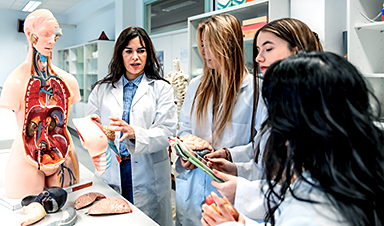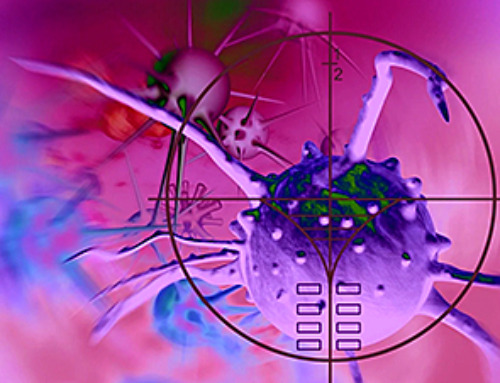New research published in the bioRxiv* preprint server suggests a small cationic peptide known as crotamine may inhibit the replication and transcription of severe acute respiratory syndrome coronavirus 2 (SARS-CoV-2). Crotamine in the D-enantiomer form successfully inhibited SARS-CoV-2 replication by targeting the C30 Endopeptidase (3CLpro protease).
Crotamine is found in rattlesnake Crotalus durissus terrificus venom and has analgesic, antibacterial, and hemolytic properties. Other drugs, such as Enalapril and Eptifibatide, are based on snake venom and approved by the U.S. Food & Drug Administration.
The advantage of the selected wild type was because of their cell penetration properties, even in D-enantiomer form, high stability and specificity, as well as selectivity against the target 3CL protease was observed,” concluded the research team.
Isolating the peptide and administering it at a low dose may help create a coronavirus disease 2019 (COVID-19) treatment for people with severe illness.
The study
The researchers expressed the SARS-CoV-2 3CLpro_GST fusion protein, needed for viral replication, on E.coli Lemo21 cells and later purified them. The viral protease was exposed to both crotamine and modified peptides with substituted cysteine residues known as L-CDP2-9 to determine the best inhibitor peptide.
First inhibition tests showed that L-CDP1, L-CDP2, L-CDP7, and L-CDP8 peptides had an 80% inhibition against the viral protease. They also tested the minimum concentration needed for crotamine to have a 100% inhibition against the 3CLpro protease. A 100% protease inhibition was achieved at 300 µM.
L-CDP1 caused complete inhibition of SARS-CoV-2 protease activity at 30 µM. A crotamine derivative with an amino acid substitution known as L-peptide-7 caused a 100% inhibition at 60 µM.
Substitutions of cysteine residues, specifically a substitution at position 36, increased L-CDP7’s inhibitory activity.
A fluorescence-based protease assay confirmed the peptide’s conformational shape during inhibition. L-CDP1, L-CDP7, and L-CDP8 peptides were found to be competitive inhibitors.
The results indicate that these peptides interact directly with amino acid residues located in the active site or with amino acids located in the substrate-binding region of the protease, preventing substrate entry to the active site,” explained the researchers.
To protect against degradation in L-enantiomer peptides, the research team created CDP1 and CDP7 in D-enantiomer form. The reasoning was that D peptides are more stable; L-CDP peptides can degrade from hydrolysis by proteases. Because the D-peptides were mirror images of L-peptides, the team predicted that binding affinity and their inhibitory effect should be similar. Results showed D-CDP1 and D-CDP7 are also competitive inhibitors. Though, D-CDP1’s interaction with the SARS-CoV-2 protease is ten times stronger than D-CDP7.
Based on the findings, the team next looked at L-CDP1’s and D-CDP1’s molecular docking efficiency using a web simulation. The simulations showed that amino acid residues of the viral protease interacted with ligand binding, suggesting a potential mode of interaction.
The amino acid residue, His41, appeared to interact with the hydrogen bond of L-CDP1’s Lys31 residues. The remaining amino acid residues are in the substrate-binding region, confirming the interaction is competitive inhibition.
D-CDP1, on the other hand, works by placing the peptide in the substrate-binding region, causing the protease’s active site to be blocked.
*Important notice
bioRxiv publishes preliminary scientific reports that are not peer-reviewed and, therefore, should not be regarded as conclusive, guide clinical practice/health-related behavior, or treated as established information.
News
Most Plastic in the Ocean Is Invisible—And Deadly
Nanoplastics—particles smaller than a human hair—can pass through cell walls and enter the food web. New research suggest 27 million metric tons of nanoplastics are spread across just the top layer of the North [...]
Repurposed drugs could calm the immune system’s response to nanomedicine
An international study led by researchers at the University of Colorado Anschutz Medical Campus has identified a promising strategy to enhance the safety of nanomedicines, advanced therapies often used in cancer and vaccine treatments, [...]
Nano-Enhanced Hydrogel Strategies for Cartilage Repair
A recent article in Engineering describes the development of a protein-based nanocomposite hydrogel designed to deliver two therapeutic agents—dexamethasone (Dex) and kartogenin (KGN)—to support cartilage repair. The hydrogel is engineered to modulate immune responses and promote [...]
New Cancer Drug Blocks Tumors Without Debilitating Side Effects
A new drug targets RAS-PI3Kα pathways without harmful side effects. It was developed using high-performance computing and AI. A new cancer drug candidate, developed through a collaboration between Lawrence Livermore National Laboratory (LLNL), BridgeBio Oncology [...]
Scientists Are Pretty Close to Replicating the First Thing That Ever Lived
For 400 million years, a leading hypothesis claims, Earth was an “RNA World,” meaning that life must’ve first replicated from RNA before the arrival of proteins and DNA. Unfortunately, scientists have failed to find [...]
Why ‘Peniaphobia’ Is Exploding Among Young People (And Why We Should Be Concerned)
An insidious illness is taking hold among a growing proportion of young people. Little known to the general public, peniaphobia—the fear of becoming poor—is gaining ground among teens and young adults. Discover the causes [...]
Team finds flawed data in recent study relevant to coronavirus antiviral development
The COVID pandemic illustrated how urgently we need antiviral medications capable of treating coronavirus infections. To aid this effort, researchers quickly homed in on part of SARS-CoV-2's molecular structure known as the NiRAN domain—an [...]
Drug-Coated Neural Implants Reduce Immune Rejection
Summary: A new study shows that coating neural prosthetic implants with the anti-inflammatory drug dexamethasone helps reduce the body’s immune response and scar tissue formation. This strategy enhances the long-term performance and stability of electrodes [...]
Scientists discover cancer-fighting bacteria that ‘soak up’ forever chemicals in the body
A family of healthy bacteria may help 'soak up' toxic forever chemicals in the body, warding off their cancerous effects. Forever chemicals, also known as PFAS (per- and polyfluoroalkyl substances), are toxic chemicals that [...]
Johns Hopkins Researchers Uncover a New Way To Kill Cancer Cells
A new study reveals that blocking ribosomal RNA production rewires cancer cell behavior and could help treat genetically unstable tumors. Researchers at the Johns Hopkins Kimmel Cancer Center and the Department of Radiation Oncology and Molecular [...]
AI matches doctors in mapping lung tumors for radiation therapy
In radiation therapy, precision can save lives. Oncologists must carefully map the size and location of a tumor before delivering high-dose radiation to destroy cancer cells while sparing healthy tissue. But this process, called [...]
Scientists Finally “See” Key Protein That Controls Inflammation
Researchers used advanced microscopy to uncover important protein structures. For the first time, two important protein structures in the human body are being visualized, thanks in part to cutting-edge technology at the University of [...]
AI tool detects 9 types of dementia from a single brain scan
Mayo Clinic researchers have developed a new artificial intelligence (AI) tool that helps clinicians identify brain activity patterns linked to nine types of dementia, including Alzheimer's disease, using a single, widely available scan—a transformative [...]
Is plastic packaging putting more than just food on your plate?
New research reveals that common food packaging and utensils can shed microscopic plastics into our food, prompting urgent calls for stricter testing and updated regulations to protect public health. Beyond microplastics: The analysis intentionally [...]
Aging Spreads Through the Bloodstream
Summary: New research reveals that aging isn’t just a local cellular process—it can spread throughout the body via the bloodstream. A redox-sensitive protein called ReHMGB1, secreted by senescent cells, was found to trigger aging features [...]
AI and nanomedicine find rare biomarkers for prostrate cancer and atherosclerosis
Imagine a stadium packed with 75,000 fans, all wearing green and white jerseys—except one person in a solid green shirt. Finding that person would be tough. That's how hard it is for scientists to [...]





















